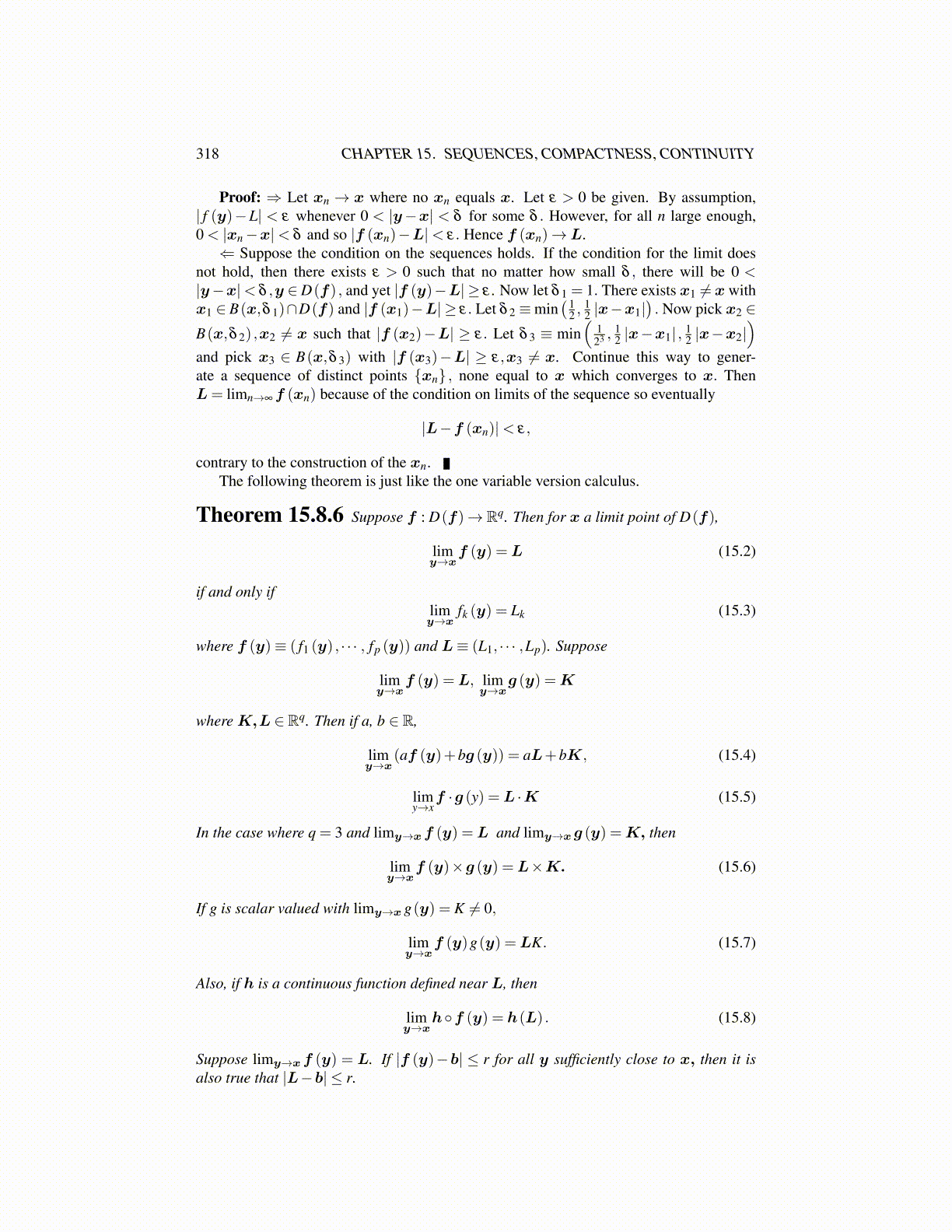
318 CHAPTER 15. SEQUENCES, COMPACTNESS, CONTINUITY
Proof: ⇒ Let xn → x where no xn equals x. Let ε > 0 be given. By assumption,| f (y)−L| < ε whenever 0 < |y−x| < δ for some δ . However, for all n large enough,0 < |xn −x|< δ and so |f (xn)−L|< ε. Hence f (xn)→L.
⇐ Suppose the condition on the sequences holds. If the condition for the limit doesnot hold, then there exists ε > 0 such that no matter how small δ , there will be 0 <|y−x|< δ ,y ∈ D(f) , and yet |f (y)−L| ≥ ε . Now let δ 1 = 1. There exists x1 ̸= x withx1 ∈ B(x,δ 1)∩D(f) and |f (x1)−L| ≥ ε. Let δ 2 ≡ min
( 12 ,
12 |x−x1|
). Now pick x2 ∈
B(x,δ 2) ,x2 ̸= x such that |f (x2)−L| ≥ ε. Let δ 3 ≡ min(
123 ,
12 |x−x1| , 1
2 |x−x2|)
and pick x3 ∈ B(x,δ 3) with |f (x3)−L| ≥ ε,x3 ̸= x. Continue this way to gener-ate a sequence of distinct points {xn} , none equal to x which converges to x. ThenL= limn→∞f (xn) because of the condition on limits of the sequence so eventually
|L−f (xn)|< ε,
contrary to the construction of the xn.The following theorem is just like the one variable version calculus.
Theorem 15.8.6 Suppose f : D(f)→ Rq. Then for x a limit point of D(f),
limy→x
f (y) =L (15.2)
if and only iflimy→x
fk (y) = Lk (15.3)
where f (y)≡ ( f1 (y) , · · · , fp (y)) and L≡ (L1, · · · ,Lp). Suppose
limy→x
f (y) =L, limy→x
g (y) =K
where K,L ∈ Rq. Then if a, b ∈ R,
limy→x
(af (y)+bg (y)) = aL+bK, (15.4)
limy→x
f ·g (y) =L ·K (15.5)
In the case where q = 3 and limy→xf (y) =L and limy→xg (y) =K, then
limy→x
f (y)×g (y) =L×K. (15.6)
If g is scalar valued with limy→x g(y) = K ̸= 0,
limy→x
f (y)g(y) =LK. (15.7)
Also, if h is a continuous function defined near L, then
limy→x
h◦f (y) = h(L) . (15.8)
Suppose limy→xf (y) = L. If |f (y)−b| ≤ r for all y sufficiently close to x, then it isalso true that |L−b| ≤ r.